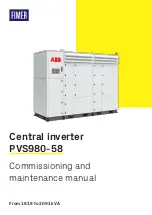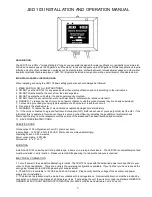
975-0697-01-01
19
Installing the Inverter/Charger
This guide for use by qualified installers only.
Step 1: Choosing a Location for the Inverter/Charger
The inverter should only be installed in a location that meets
the following requirements:
FIRE AND EXPLOSION HAZARD
This equipment contains components that could produce arcs or sparks.
To reduce the risk of fire or explosion, do not install this equipment in
compartments containing batteries or flammable materials, or in locations
that require ignition-protected equipment. This includes any space
containing gasoline-powered machinery, fuel tanks, or joints, fittings, or
other connections between components of the fuel system.
Failure to follow these instructions will result in death or serious injury.
HEAT HAZARD
Do not cover or obstruct the ventilation openings. Do not install this
equipment in a compartment with limited airflow. Overheating may result.
Failure to follow these instructions can result in minor or moderate injury.
Ventilated
Do not operate the inverter/charger in a closed-in
area or restrict ventilation in any way. The inverter/
charger requires air circulation to maintain
optimum operating temperature and provide best
performance. If the unit has inadequate ventilation,
it may shut down due to overheating.
The air vented through the openings should also
have a path to circulate away from the inverter/
charger.
Dry
Do not allow water or other fluids to drip or splash
on the inverter/charger. Do not expose to rain, snow
or water.
Use an optional inverter drip shield (PN: 808-9004)
for marine installations.
Cool
Normal air temperature should be between
0 °C and 60 °C—the cooler the better within this
range.
Clearance
Allow as much space around the inverter/charger as
possible. It is recommended that other objects and
surfaces be at least 76 mm away from the
ventilation openings for best performance.
FSW 230V Installation Guide.book Page 19 Tuesday, August 7, 2018 9:18 AM
















































